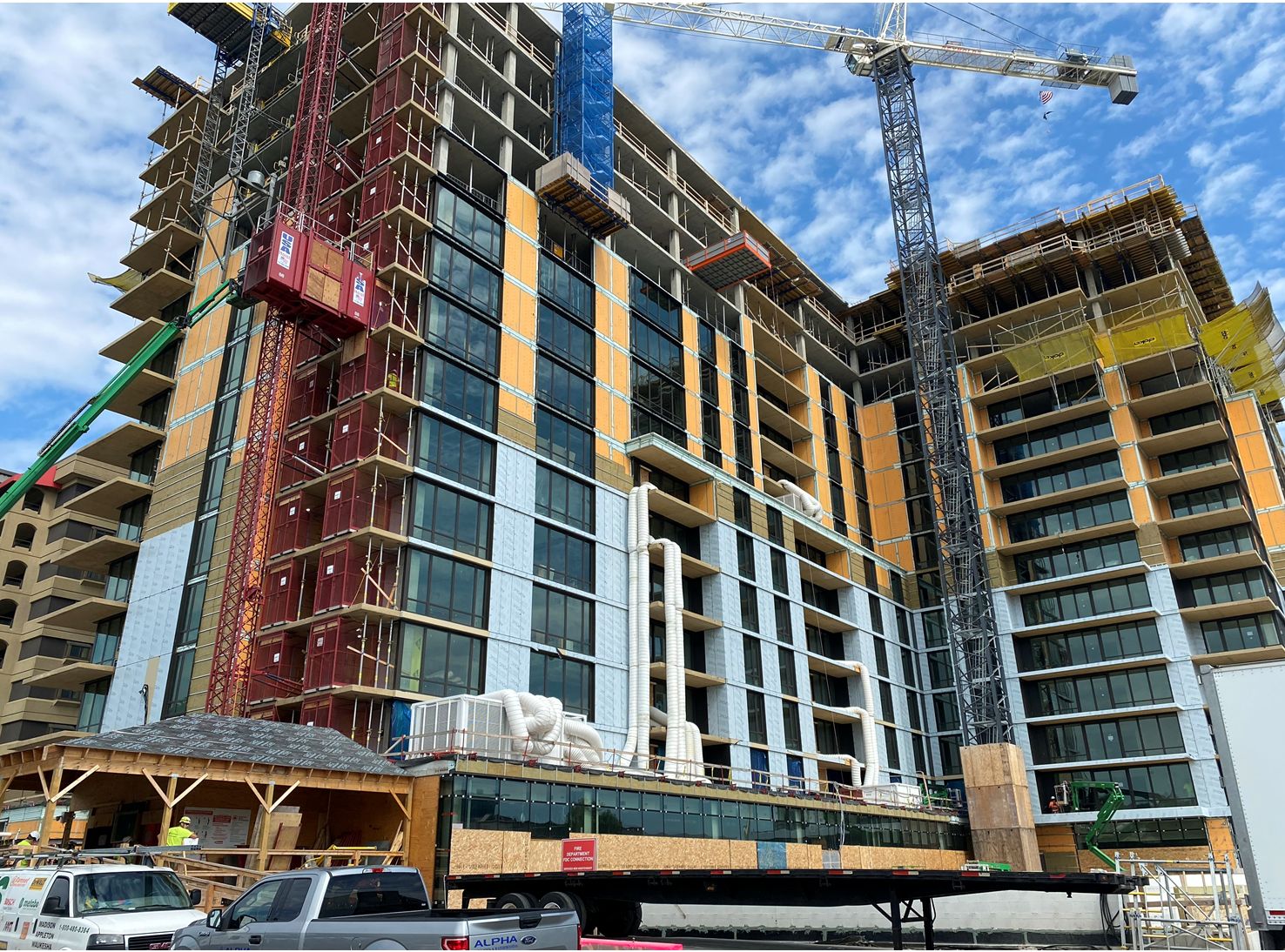Expert Structural and Architectural Expansion Joints Installation
Alpha Insulation & Waterproofing offers a wide variety of expertise in the proper installation of structural and architectural expansion joints. We understand that concrete expands and contracts due to thermal movement, and managing that thermal stress on the structure can be a headache for the owner, architect and contractor.
Alpha has complete access to meet or exceed the project specifications, from heavy-duty systems to nearly invisible floor systems. This includes slip-resistant cover plates, watertight and fire-rated systems, and ADA compliance.
Let’s Work Together On Your Next Project
Contact Us TodayOur split-slab deck, solid deck and plaza experiences include airports, parking decks, stadiums, roof joints and roadways.
Split-slab deck: Used in areas where there will be occupied space below the slab, a split slab deck is divided into two layers — a lower structural slab and an upper slab that provides a durable surface to withstand weather, traffic and more. A waterproofing membrane separates the two and protects the lower levels from the elements. Expansion joints allow adjacent slabs to expand and contract with temperature changes while providing a seal that creates a continuous waterproofing layer from slab to slab.
Solid deck: Unlike a split-slab deck that features layered slabs, a solid deck combines the structural and traffic-bearing surfaces into a single slab. Expansion joints are required along the perimeter of a solid deck to seal the slab and provide room for expansion between adjoining slabs.
Plaza deck: Similar to a split-slab deck, a plaza deck features a layered design. It can be used over occupied areas and can provide for both foot and vehicular traffic, along with greenscaping like grass, planters and more. A structural slab is followed by a waterproofing membrane above it, a drainage layer, then a wear surface, pavers or greenscaping. Expansion joints enable movement between adjacent slabs and complete the waterproofing layer between adjoining slabs.
Exterior and Interior Wall Joint Installation
Our rated and non-rated exterior wall joint installation includes tunnels, planters, cavity walls and a variety of facades like EIFS, CMU, block or brick. Our interior wall joint installation includes office buildings, hospitals, airports and mixed-use retail/condos.
In exterior walls, expansion joints are designed primarily to allow movement between adjoining wall sections due to thermal expansion, wind loads and seismic activity. They also seal out the elements like rain and wind, forming an essential part of the cladding system.
In interior walls, expansion joints provide room for adjoining wall sections to move while creating aesthetically pleasing joints between wall sections. As part of the firestop system, they also help prevent the spread of smoke and toxic gases during fires while minimizing the transmission of noise and odors between adjacent rooms.
In both interior and exterior applications, expansion joints are essential to the structural integrity and safety of a commercial building.
Let’s Work Together On Your Next Project
Contact Us TodayWhy Choose Alpha for Expansion Joint Installation?
We are skilled in providing professional installation, troubleshooting solutions to match job site conditions and completing work on time to keep your project on schedule. We can provide many options from all major manufacturers, to give our customers the best value and provide long service life.
We are constantly working with our manufacturers to keep up with technological advancements and the upkeep of our certifications. We can help you avoid costly pitfalls and the limitations of these various systems, with solid workmanship and value from the bid process onward.
Expansion Joint FAQs
Why are expansion joints necessary?
Large commercial buildings often experience movement that would cause damage to rigid materials like concrete or masonry surfaces. Expansion joints allow these materials to move, expand and contract without hitting nearby surfaces and causing damage.
Most expansion joints are filled with materials that absorb movement, such as caulks, foam or fibrous materials, but these need to be replaced every 10 years or so. At Alpha, we can repair or replace damaged, worn or missing expansion joints, restoring the look of your commercial building.
What causes buildings to move?
There are three common causes of movement in commercial buildings. The first is thermal expansion and contraction. As temperatures rise during the day and fall at night, building materials will naturally expand and contract. Expansion joints absorb this movement.
The second most common cause is wind loading. Even the most rigid buildings will flex back and forth with the wind, and in taller buildings, the distances can be significant. Expansion joints allow these buildings to flex without damage.
The third cause of movement is seismic activity. Earthquakes can cause buildings to flex in all directions, and without expansion joints to absorb the movement, the stresses would likely cause catastrophic failure. At Alpha, we can identify the causes of building movement in your area and recommend the best expansion joint solutions for your needs.
What types of expansion joints do you install?
At Alpha, we have experience with all types of structural and architectural expansion joints. We can install, repair and replace split slab, solid slab and plaza expansion joints, interior wall expansion joints and exterior wall expansion joints for brick, block, concrete and masonry wall surfaces. We source expansion joint materials from many top industry manufacturers to provide our customers with the best products for their unique needs and budgets.
What are fire-rated expansion joints?
Fire-rated expansion joints allow adjacent materials to move, expand or contract while maintaining a seal between the materials. This ensures that if a fire occurs, flames, smoke and toxic gases cannot travel from room to room through the expansion joints, giving building occupants more time to escape.
Fire-rated expansion joints must have the same fire rating as surrounding materials so they can maintain the seal for as long as possible. At Alpha, we install fire-rated and non-rated expansion joints.

